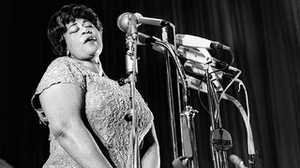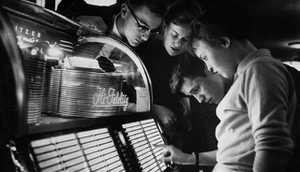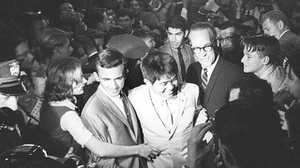A song inspired by a Marc Chagall painting and sung by an Italian actor ruled the American airwaves the summer of ‘58.
By Elijah Wald
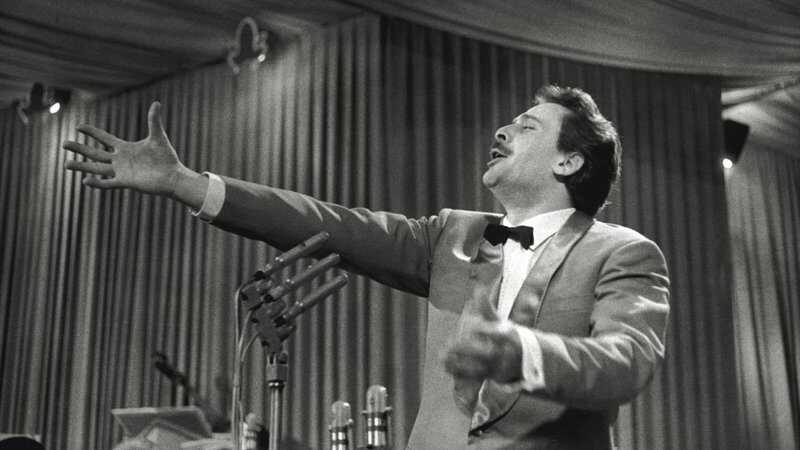
The popular music of the late 1950s was dominated by Italian singers from the urban northeast — though you might never guess it with a cursory glance at their names. Besides the uncontested star of the group, Frank Sinatra, there was Perry (Pierino) Como and Dean Martin (Dino Crocetti), both of whom had top ten records in 1958. Meanwhile, the rock and doo-wop scene was full of young Italians: the top ten summer songs of 1958 included “Little Star” by an Italian-American quintet called the Elegants, and “Splish Splash” by Bobby Darin (born Cassotto). Their popular peers included Frankie Avalon (Avalone), Joey Dee (DiNicola), Dion (DiMucci), Connie Francis (Franconero), and dozens more; even Elvis Presley had one of his biggest hits with “It’s Now or Never,” an English-language rewrite of “O Sole Mio.”
But the biggest hit of the summer of 1958 — and, indeed, the whole year — was not an export, but an import; “Nel Blu Dipinto di Blu,” better known as “Volare” (“Flying”) by an artist with the unmistakably Italian name of Domenico Modugno.
The end of the swing era had left an opening for new sounds on the American pop scene, and it was a high point for international artists and songs. Nonetheless, Modugno’s success was unprecedented. Though sung entirely in Italian, “Volare” not only eclipsed all the year’s other records in sales, but won both song and record of the year in the first Grammy Awards (as well as a nomination for Modugno as best male vocalist) — despite competition from a bilingual remake by Dean Martin. The song went to the top ten again in 1960, in an English version by Bobby Rydell (Ridarelli), but Modugno’s remains the most familiar performance.
The uniqueness of this breakthrough is underlined by how unusual the song was considered even in Italy. Modugno was an actor, songwriter, and radio personality whose voice was considered rather rough and unsophisticated — in Italian terms, he was an urlatore, or “yeller,” rather than a great singer. As for the song itself, co-writer Franco Migliacci was inspired by a Marc Chagall painting of a hovering figure with a blue face, and imagined someone daubing himself blue and flying through space. With that unlikely base, they wrote a soaring paean to freedom, and Modugno set the Italian pop world on its ear by winning the prestigious San Remo Festival as both singer and composer. He went on to perform the song as Italy’s entry in the Eurovision Song Contest, taking third prize and inspiring covers throughout Europe in various languages.
If Modugno’s triumph was in some ways unique, it is also a reminder of how varied the American pop world was on the cusp of the rock era. Thanks to “golden oldies” marketing, we tend to remember the late 1950s as an era of rebellious young rock ‘n’ rollers — but there were still a lot of other sounds in the air, some of which appealed to a broader audience than the rocking teen hits. The Top 40 format — in which radio stations played a mix of the week’s forty top-selling records, regardless of genre — meant that radio listeners heard older artists like Frank Sinatra, Dean Martin, Ella Fitzgerald, Nat King Cole, and Sarah Vaughn alongside the latest teen idols, and sometimes sounds from further afield as well. For a while, mambo was running neck and neck with rock ‘n’ roll as a dance craze; Bill Haley’s “Rock Around the Clock” was the number two hit of 1955, behind “Cherry Pink and Apple Blossom White,” by Pérez Prado, the King of the Mambo — and Haley himself had previously scored with “Mambo Rock.”
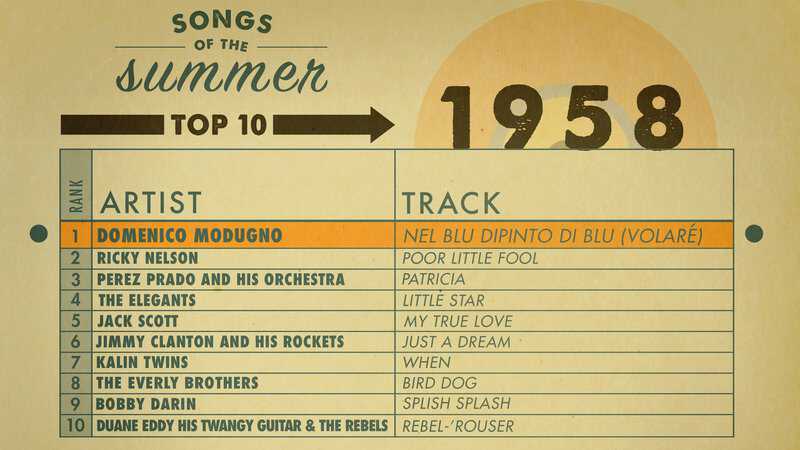
“Volare” was the most successful foreign-language hit in U.S. history, but its success inspired imitation, and for a few years international sounds were a regular part of the pop mix. Italians continued to lead the way; Connie Francis recorded an album of Italian favorites in 1959 that was so popular she recorded five more in the next four years, as well as collections of Spanish, German, and Yiddish songs. Emilio Pericoli’s “Al di là” reached the top ten in 1962 and the number one hits of 1963 included the Singing Nun’s French “Dominique,” and Kyu Sakamoto’s Japanese “Sukiyaki.”
In hindsight, it’s easy to treat those records as anomalies and think of the Everly Brothers and Duane Eddy as more typical of where American pop was headed in the summer of ’58 — but it’s worth remembering that although the Beatles were rock ‘n’ rollers, they were also European imports. Pop lineages are complicated, and it’s not so far from “Flying into the blue, painted blue” to “Lucy in the Sky with Diamonds.”
Listen to the complete top ten from the summer of 1958 on Spotify.

Elijah Wald is a writer and musician whose books include How the Beatles Destroyed Rock 'n' Roll: An Alternative History of American Popular Music and Dylan Goes Electric! He has traveled widely as a performer and speaker, and his work is translated in Italian, French, German, Japanese, and Croatian.
Roll down the windows, turn up the volume and prepare to sing along as American Experience celebrates the music of the season with Songs of the Summer.
In 1958, Billboard launched its Hot 100, chronicling the songs that were flying off record store shelves, playing non-stop on juke boxes, and blaring through radio speakers. Almost sixty years on, how we listen to music and how we track a song’s success may have changed, but music remains a powerful force in our culture. Every Friday from June 2 through August 25, we’ll reveal one iconic song that hit the charts, accompanied by commentary from some of our favorite music writers. Explore our historical mixtape, and check back each Friday for our next track.
Published June 2, 2017.




